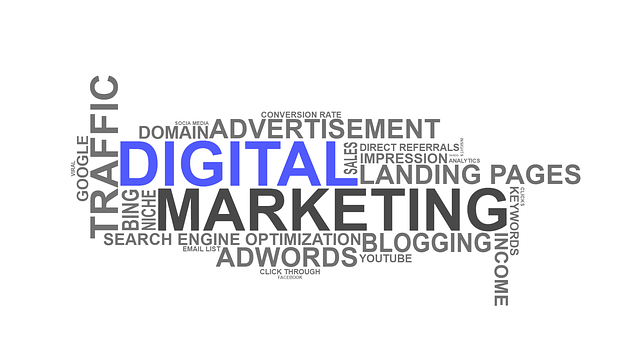Senior digital marketing leaders gathered in Hollywood, Fla., last week to discuss the most pressing issues in the industry today at the IAB Annual Leadership Meeting. Top of the agenda was the controversy around fake news and how advertisers can help restore consumer trust.
Attendees heard from incoming IAB Chair Jim Norton, who emphasized the value of quality storytelling, and from P&G’s Chief Brand Officer Marc Pritchard on how his company is streamlining its media supply chain to ensure media transparency – including adopting the Media Rating Council’s validated viewability standard. They also held town halls to discuss what should be on the industry’s agenda this year.
SmartBrief caught up with several attendees to get their thoughts on the biggest challenges facing the digital ad industry right now. Here’s what they had to say:
Darshan Patel, senior director of ad product & marketing strategy at Conde Nast
It’s a great time to be a publisher. We are now working closer than ever with our industry partners to get the right ad to the right person at the right time. Whether that user has intent to make a purchase or just wants to learn more about a brand or product – we have that data and are working hard to keep relevance high in all aspects. My team gets to be part of the conversation on an ongoing basis as we solve how that data aligns with each brand’s audience and how that audience aligns with our advertiser’s goals.
That said, there are still major challenges for our industry to work through in 2017. One of the challenges Conde Nast is tackling head-on is finding the right balance in delivering content and monetizing our brand properties. Publishers understand slideshows, mastheads, and roadblocks all can interrupt the user’s experience. Our team is committed to determining the right balance between monetization, delivering a beautiful and seamless user experience, and continuing to distribute honest editorial.
Daniel Feldstein, head of marketing at Medialets
To me, the issue running through the entire conference is really truth and trustworthiness. Marc Pritchard was spot on with his assessment of what brands need to do to hold their partners accountable. At Medialets, we work with the world’s biggest advertisers to help them get what they’ve paid for in mobile and to accurately assess attribution across their media. Independent third-party measurement is important not just for us but throughout the industry — whether the issue is viewability and where ads are running, that ads are not running alongside fake news, that advertisers are getting the inventory that they are paying for, or that they can verify that someone has seen it and not just a bot or spider. All these things come down to the fact that as digital we need to present buyers with something that’s credible and transparent — that they know what they are getting and have an objective third party to validate their spend.
We’ve seen so many solutions emerge over the years, and we’ve seen multiple platforms say, “I’m different, I’m unique and I shouldn’t be held to the same standards.” To me, that holds the industry back. If you look at TV, if you look at print, if you look at any other advertising medium, they grow and they mature because no matter where in that system people buy, they know exactly what they are getting. They know they’re not going to be charged for a commercial that doesn’t run in the time slot against the media that they bought. Until advertisers or buyers can get that level of confidence in digital, we’re still going to be plagued by the issues that we talk about at these conferences.
Michelle Engle, vice president of product marketing/management at MaxPoint
I believe the biggest challenge the advertising industry will face in 2017 is delivering on the promise of true personalization. Confronting that challenge head on will largely mean engineering technologies that overcome what we’ve seen impede personalization to date: scale and agility.
It comes as no surprise that today’s customers are always on. They can become interested in a product, research it, and buy it on their smartphone faster than ever before. Those same consumers expect that the retailers and brands they interact with are always on as well. Brands, retailers, and even publishers who want to deliver meaningful marketing experiences to their audiences will have to think about the full realm of their customer base and prospects, not just a small portion of their audience. Nearly every person demands personalization, and to be able to make an impact means thinking about how you expand that consideration of individual needs across the full realm of your customer base and prospects.
Delivering on the promise of personalization will only be realized if we can at the same time match content and offers quickly to consumers’ interests right now. Desires are fluid, and advertisers have to detect those shifts in purchase intent at a faster rate in order to deliver personalization in an immediate way. There’s a lot of untapped possibility that, with the right focus and investment in developing powerful technology, we can unlock as an industry in 2017.
Drew Bradstock, senior vice president of product at Index Exchange
The biggest issue facing digital advertising right now is the lack of transparency. The opaqueness of ad tech companies has led to steadily increasing “ad-tech taxes” that have benefited neither advertisers nor publishers.
The emergence of header bidding this year has driven these fees out into the open as only companies — both exchanges and buyers — that offer the highest net price onto the publisher are winning inventory. Those who hid behind opacity and bad managed tags are watching their businesses decline as pubs realize that many of these arrangements may have actually hurt their total revenue, rather than being incremental.
Cailin Petracca contributed to this blog post.
